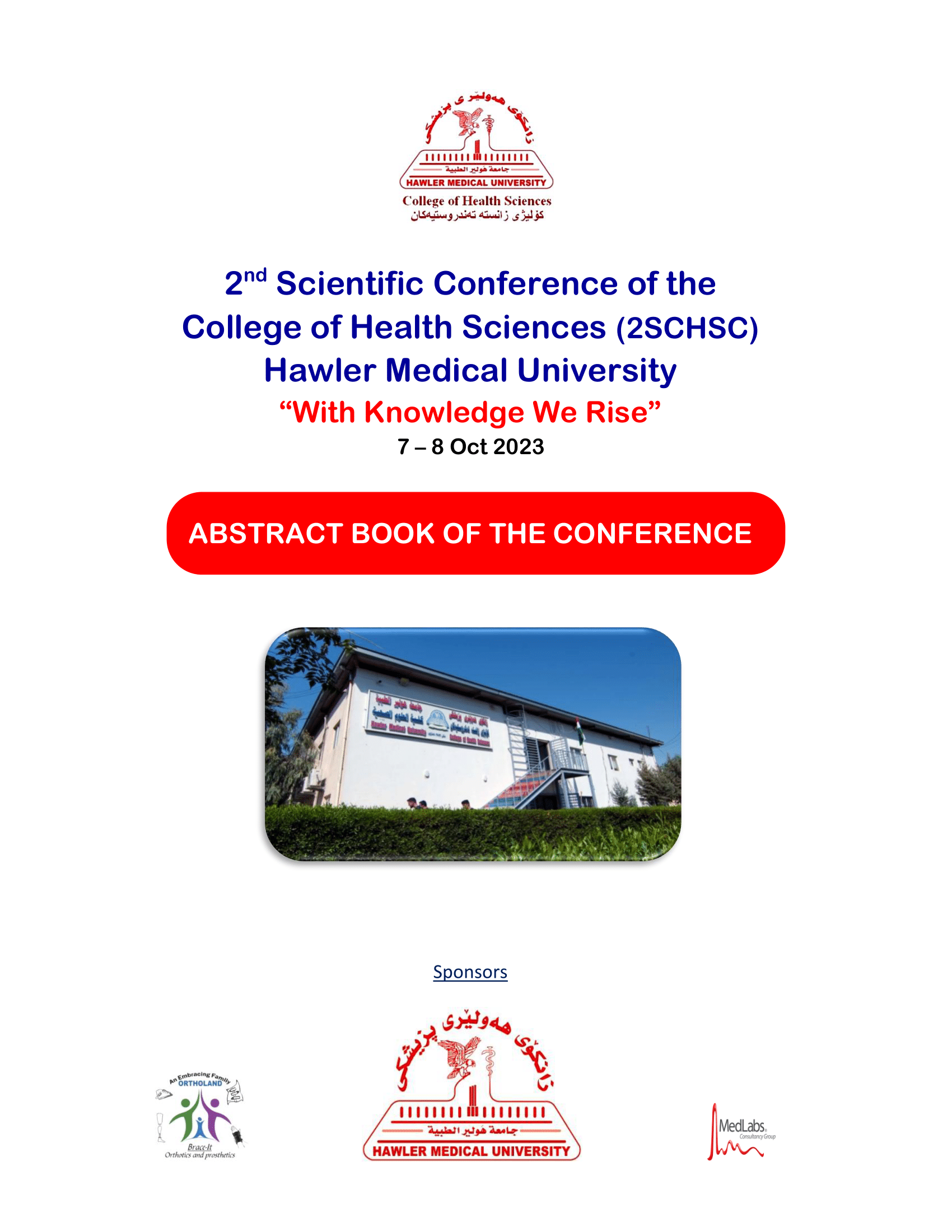Novel Role Expression Between Normal Cell and Long Non-coding RNA
DOI:
https://doi.org/10.15218/hcchs.2023.01Keywords:
ARID3A, lncRNA ERICD,, Knockdown, OverexpressionAbstract
Background and objective: ERICD (E2f1-regulated inhibitor of Cell Death) is a newly found lncRNA located on chromosome 8. ERICD is regulated by E2F1. ARID3A/DRIL1/Bright is a family member of the AT-rich interaction domain (ARID) DNA-binding proteins that are involved in diverse biological processes. ARID3A binds to the E2F transcription factor and activates E2F-dependent transcription. I have found putative binding sites of ARID3A on ERICD. I think that ARID3A and ERICD might be regulated by each other for several biological processes in cancer. The other hypothesis for selecting these two in our study is that both of them have just opposite roles in apoptosis in case of DNA damage indicating a probability of reciprocal interaction between each other. To explore if ARID3A regulates the expression of lncRNA ERICD.
Methods: We took advantage of a human osteosarcoma cell line (U2OS) that each expresses conditionally active ARID3A and ERICD. Overexpression and knockdown experiments were carried out for ARID3A and a knockdown experiment was done for ERICD. Migration assay and colony formation assays were also performed in U2OS. siRNA-mediated knockdown of ARID3A and ERICD inhibited cell migration and reduced the formation of colonies in U2OS cells to a considerable degree. On the other side overexpression of ARID3A confirmed a significant induction in wound closure and increased colony-forming ability of U2OS cells.
Results: The obtained findings in this study showed that ARID3A and ERICD interact with each other indirectly via E2F1. Moreover, ARID3A and lncRNA ERICD have oncogenic functions in osteosarcoma. The interaction that has been found between ARID3A and lncRNA ERICD is novel and adds a further milestone regarding lncRNAs targeting DNA-binding proteins.
References
Rinn, J. and M. Guttman, RNA Function. RNA and dynamic nuclear organization. Science, 2014. 345(6202): p. 1240-1.
Gong, C. and L.E. Maquat, lncRNAs transactivate STAU1-mediated mRNA decay by duplexing with 3' UTRs via Alu elements. Nature, 2011. 470(7333): p. 284-8.
Mariner, P.D., et al., Human Alu RNA is a modular transacting repressor of mRNA transcription during heat shock. Mol Cell, 2008. 29(4): p. 499-509.
Gutschner, T., M. Hammerle, and S. Diederichs, MALAT1 -- a paradigm for long noncoding RNA function in cancer. J Mol Med (Berl), 2013. 91(7): p. 791-801.
Matouk, I.J., et al., The H19 non-coding RNA is essential for human tumor growth. PLoS One, 2007. 2(9): p. e845.
Brooks, C.L. and W. Gu, p53 regulation by ubiquitin. FEBS Lett, 2011. 585(18): p. 2803-9.
Adams, J.M. and S. Cory, The Bcl-2 apoptotic switch in cancer development and therapy. Oncogene, 2007. 26(9): p. 1324-37.
Lowe, S.W., E. Cepero, and G. Evan, Intrinsic tumour suppression. Nature, 2004. 432(7015): p. 307-15.
Gupta, R.A., et al., Long non-coding RNA HOTAIR reprograms chromatin state to promote cancer metastasis. Nature, 2010. 464(7291): p. 1071-6.
Dorak, M.T. and E. Karpuzoglu, Gender differences in cancer susceptibility: an inadequately addressed issue. Front Genet, 2012. 3: p. 268.
Siegel, R., D. Naishadham, and A. Jemal, Cancer statistics, 2012. CA Cancer J Clin, 2012. 62(1): p. 10-29.
Gutschner, T. and S. Diederichs, The hallmarks of cancer: a long non-coding RNA point of view. RNA Biol, 2012. 9(6): p. 703-19.
Hanahan, D. and R.A. Weinberg, The hallmarks of cancer. Cell, 2000. 100(1): p. 57-70.
Hanahan, D. and R.A. Weinberg, Hallmarks of cancer: the next generation. Cell, 2011. 144(5): p. 646-74.
Hollstein, M., et al., p53 mutations in human cancers. Science, 1991. 253(5015): p. 49-53.
Levine, B. and G. Kroemer, Autophagy in the pathogenesis of disease. Cell, 2008. 132(1): p. 27-42.
Mizushima, N., Autophagy: process and function. Genes Dev, 2007. 21(22): p. 2861-73.
Galluzzi, L. and G. Kroemer, Necroptosis: a specialized pathway of programmed necrosis. Cell, 2008. 135(7): p. 1161-3.
Zong, W.X. and C.B. Thompson, Necrotic death as a cell fate. Genes Dev, 2006. 20(1): p. 1-15
Xu, C., et al., MALAT-1: a long non-coding RNA and its important 3' end functional motif in colorectal cancer metastasis. Int J Oncol, 2011. 39(1): p. 169-75.
Grivennikov, S.I., F.R. Greten, and M. Karin, Immunity, inflammation, and cancer. Cell, 2010. 140(6): p. 883-99.
Jendrzejewski, J., et al., The polymorphism rs944289 predisposes to papillary thyroid carcinoma through a large intergenic noncoding RNA gene of tumor suppressor type. Proc Natl Acad Sci U S A, 2012. 109(22): p. 8646-51.
Feldstein, O., et al., The long non-coding RNA ERIC is regulated by E2F and modulates the cellular response to DNA damage. Mol Cancer, 2013. 12(1): p. 131.
Cabili, M.N., et al., Integrative annotation of human large intergenic noncoding RNAs reveals global properties and specific subclasses. Genes Dev, 2011. 25(18): p. 1915-27
Blasco, M.A., Telomeres and human disease: ageing, cancer and beyond. Nat Rev Genet, 2005. 6(8): p. 611-22.
Shay, J.W. and W.E. Wright, Hayflick, his limit, and cellular ageing. Nat Rev Mol Cell Biol, 2000. 1(1): p. 72-6.
Schmidt, L.H., et al., The long noncoding MALAT-1 RNA indicates a poor prognosis in non-small cell lung cancer and induces migration and tumor growth. J Thorac Oncol, 2011. 6(12): p. 1984-92.
Meyne, J., R.L. Ratliff, and R.K. Moyzis, Conservation of the human telomere sequence (TTAGGG)n among vertebrates. Proc Natl Acad Sci U S A, 1989. 86(18): p. 7049-53.
Benetatos, L., G. Vartholomatos, and E. Hatzimichael, MEG3 imprinted gene contribution in tumorigenesis. Int J Cancer, 2011. 129(4): p. 773-9.
Counter, C.M., et al., Telomere shortening associated with chromosome instability is arrested in immortal cells which express telomerase activity. EMBO J, 1992. 11(5): p. 1921-9.
Bobbs, A., et al., ARID3B Directly Regulates Ovarian Cancer Promoting Genes. PLoS One, 2015. 10(6): p. e0131961.
Molenaar, C., et al., Visualizing telomere dynamics in living mammalian cells using PNA probes. EMBO J, 2003. 22(24): p. 6631-41.
Downloads
Published
How to Cite
Issue
Section
License
Copyright (c) 2025 Ayshan R. Yassin, Bakhtyiar Sh. Azeez

This work is licensed under a Creative Commons Attribution-NoDerivatives 4.0 International License.











